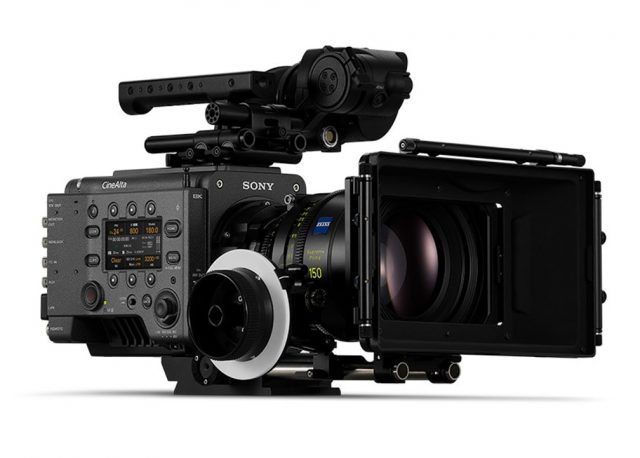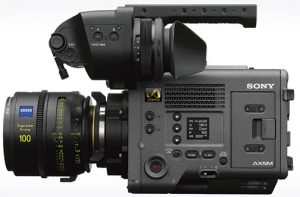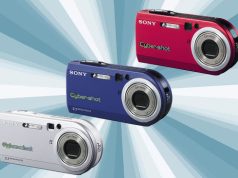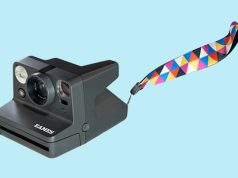
Los Angeles, CA—The Sony Venice 2 debuted as the new flagship and latest addition to Sony’s high-end digital cinema camera line. It builds upon the original Venice with new features.
The new model offers a compact design, internal recording and the option for two different image sensors. Users can opt for the newly developed full-frame 8.6K sensor or the original 6K sensor. In addition, the camera inherits popular features from the original Venice; for instance, color science, dual base ISO and 8-stops of built-in ND filters.
Since 2017, filmmakers have used the Venice to shoot more than 300 productions and streaming releases. Regular firmware and hardware updates were key to the camera’s wide adoption.

“Based on our conversations with cinematographers and production companies around the world, we recognized an opportunity to improve by leveraging many of our latest imaging and sensor technologies,” said Neal Manowitz, president and COO, Sony Electronics.
“We also made the camera smaller and are offering internal recording to enable more creative freedom: whether that means using the camera on drones, Steadicams, aerial gimbals or underwater housings.”
Notably, Sony worked with the industry’s top cinematographers to test the camera’s image quality on film shoots without professional lighting. For example, award-winning cinematographer Robert McLachlan ASC, CSC, who worked on Game of Thrones, Westworld and Lovecraft Country, filmed with the 8.6K Venice 2.
“I really wish we’d had a large-format, 8.6K sensor like the Sony Venice 2 on my past work. It would have made it feel even more epic and, at the same time, more engaging; thanks to the increased resolution, richness and dimensionality. The increased speed, cleaner highlights and shadows together with the potential for super-shallow depth of field would have been a huge asset,” McLachlan commented.
Sony Venice 2 Key Features
Employing the 8.6K (8,640×5,760) full-frame CMOS sensor, the Venice 2 achieves 16 stops of total latitude to capture images with excellent color separation and shadow detail. Moreover, color science from the original Venice produces natural skin tones.
In addition, the 8K CineAlta camera has a dual base ISO of 800/3200. As a result, filmmakers can capture clean, film-like images under various lighting conditions. It also supports everything from full-frame and full-frame anamorphic to Super 35 at a minimum of 4K resolution.

Furthermore, with the 8.6K sensor providing ample oversampling, images shot on the Venice 2 will benefit from less noise and enriched information in a 2K or 4K production. It also means the camera is an option for VR, in-camera VFX and virtual production setups. Sony says it delivers “an immersive experience and realistic images especially in combination with Sony’s high-contrast and large-scale crystal LED displays.”
In addition, the new model remains compatible with a range of lenses. These comprise all PL-mount and Sony E-mount lenses, which enables adapters for a multitude of lenses.
Addressing direct feedback, the Venice 2 has a smaller and more lightweight body while keeping its intuitive operability. However, despite being approximately 10% lighter, the camera’s chassis allows internal recording of X-OCN and Apple 4K ProRes 4444 and 422 HQ without the AXS-R7 recorder.
Moreover, the selectable capture resolution of the 8.6K sensor allows shooting in various modes. These include full-frame 8.6K, 3:2, 30 frames per second; full-frame 8.2K, 17:9, 60 fps; Super 35 5.8K, 6:5 anamorphic, 48 fps; as well as Super 35, 5.8K, 17:9, 90 fps.
Interchangeable Sensor Design
For more flexibility on-site, the new chassis adds the opportunity to interchange the image sensor block between the 8.6K and the original 6K sensor block. In addition, the camera body automatically recognizes the change and will start up without any firmware exchanges or reinstalls.
What’s more, the body leverages new high-speed 6.6 Gbps AXS card AXS-A1TS66 for 8K 60p recording. Existing AXS memory card readers, including AXS-AR3 via the Thunderbolt 3 interface, are supported.
Additionally, the Venice 2 user interface is the same as the original Venice. However, it incorporates improvements to make it easier and more intuitive. Other updates based on the feedback from Venice users include 4K output with LUT applied; improved 3D LUT processing; EI changes directly applied to S-Log3 outputs; LUT/ASC-CDL control via Ethernet/Wi-Fi ; zoom to fit (full-frame recording with 17:9/16:9 monitoring) operation ; the Ethernet connector position changed to the camera assistant side; a Lemo 2pin 12V output connector; and an internal microphone.
The Sony Venice 2 with an 8.6K image sensor will start shipping in February 2022. The Venice 2 with a 6K sensor will ship in March 2022. In addition, while the Venice 2 6K works with the existing extension system, Sony plans to release a next-gen extension system for the Venice 2 8K by early 2023.





